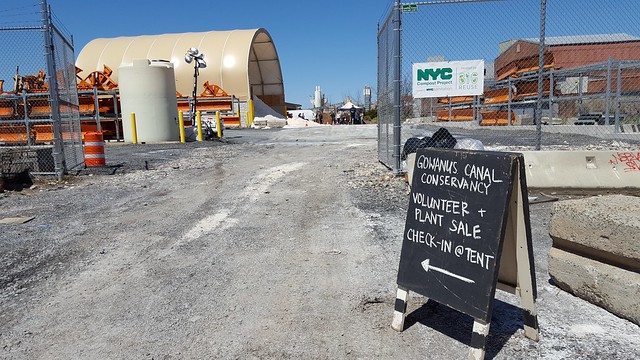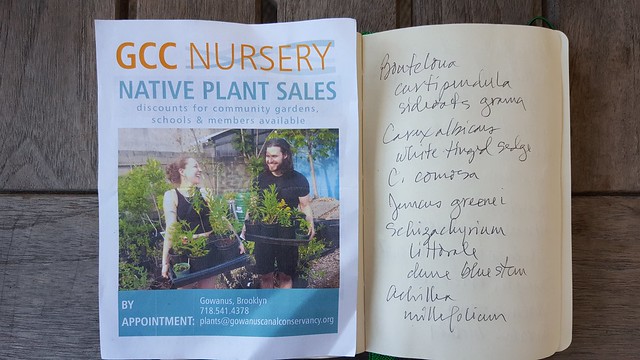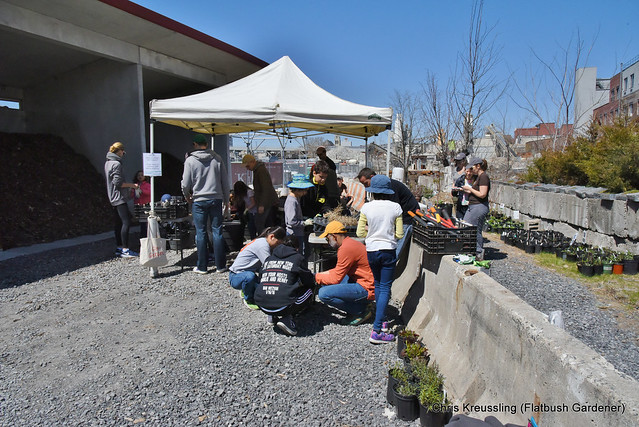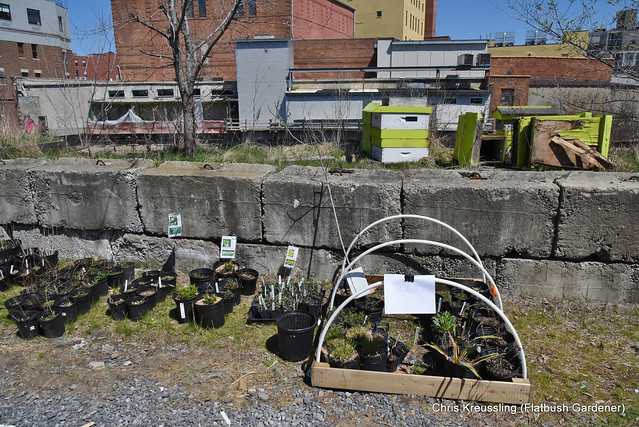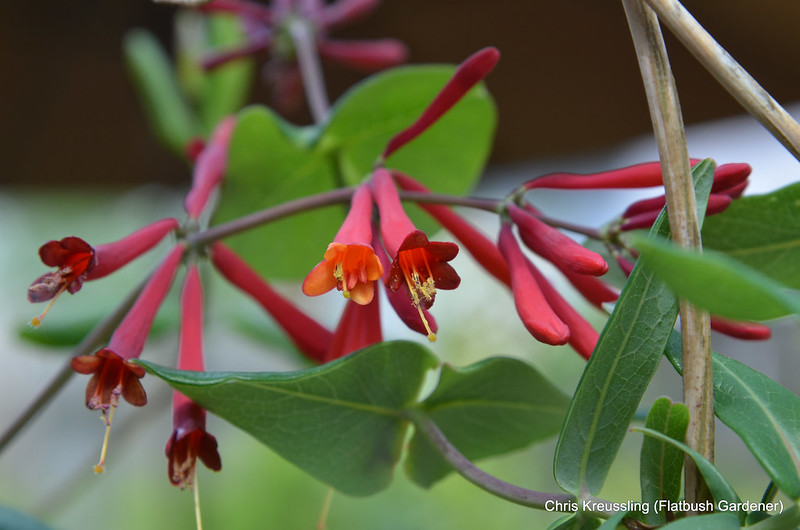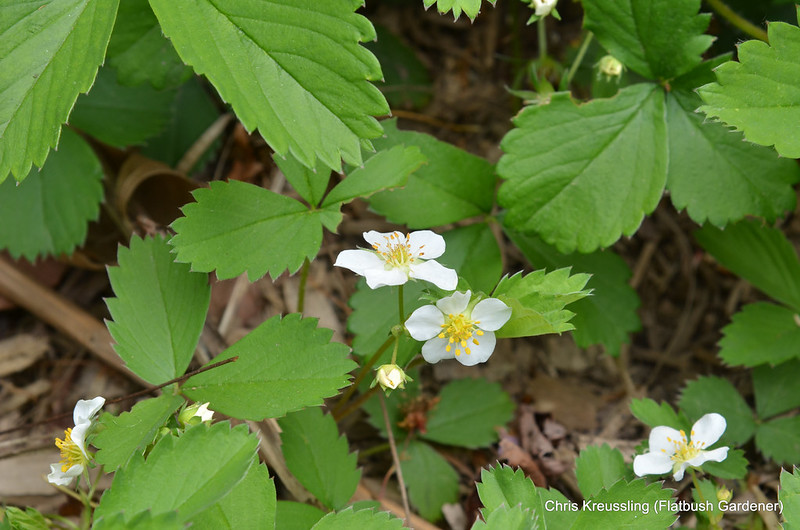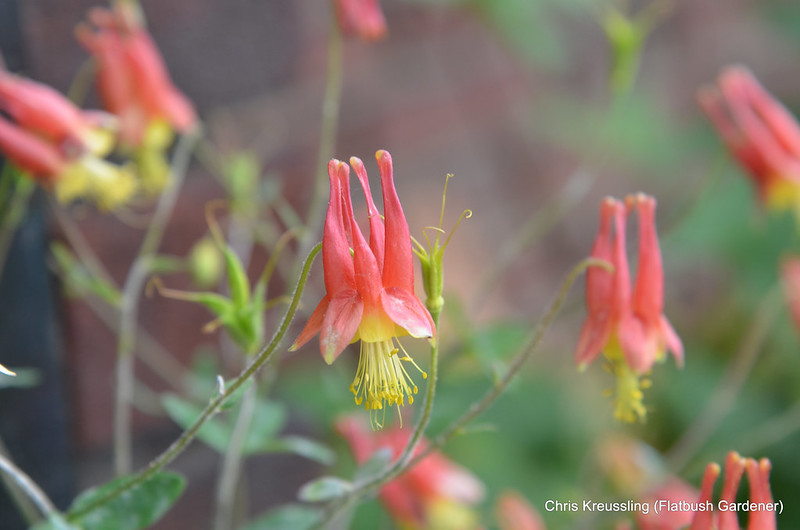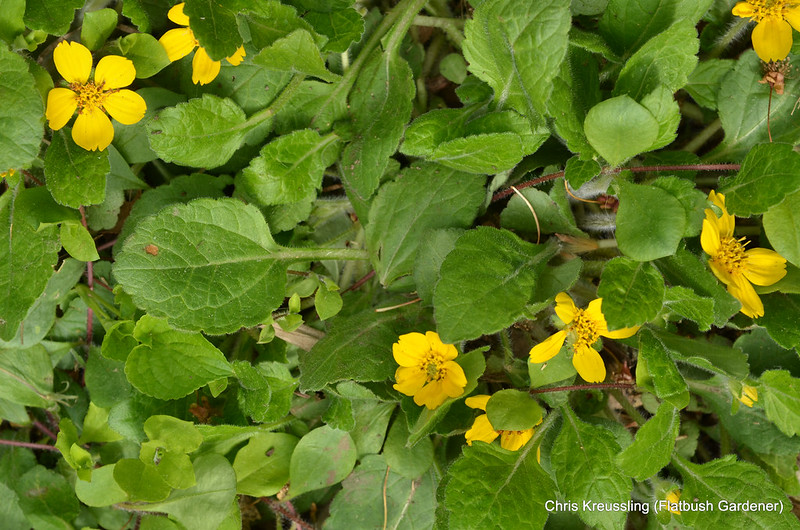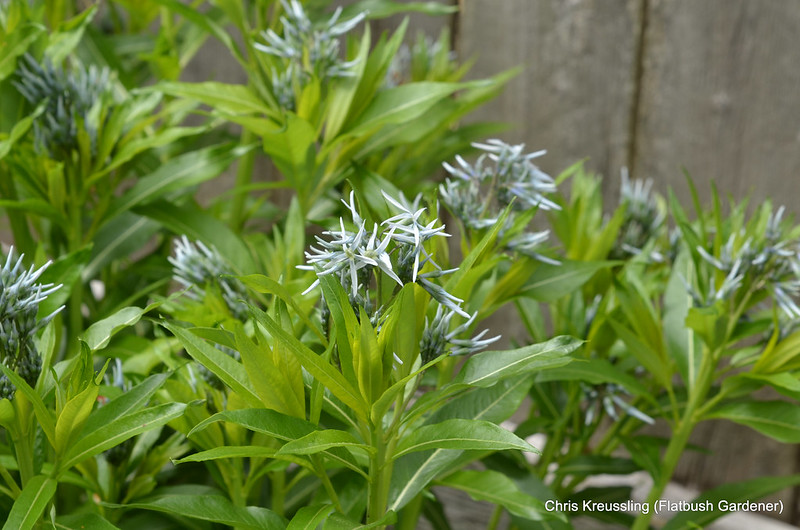Today I made my way to my first Gowanus Canal Conservancy Native Plant Sale. Today is Earth Day 2018, and today’s sale was held at their nursery location, the Salt Lot where Second Avenue ends at the Gowanus Canal. They have two more sales this season. The next, on May 19th, conflicts with the NYC Wildflower Week tour of my garden.
A wide range of species are listed are available on their nursery page. Not all of them are still in stock. In compensation, they had other unlisted species available at today’s plant sale.
I used their published list of species to make a shopping list, always a good idea when heading out to plant sales. I cross-checked their list for species that 1) I didn’t already have, and 2) were native to New York City. Since they list the Greenbelt Native Plant Center as a partner, I suspected many of their species would be NYC-local ecotypes. I made a few exceptions for cases where I have the species, but not a NYC-local ecotype, e.g.: Solidago sempervirens, seaside goldenrod.
I had the chance to speak with a few of their staff and volunteers, including Diana Gruberg, their Horticultural Manager for the whole operation. I was pleased when she confirmed that some 90% of their species originated with Greenbelt. They are now successfully propagating many of these species themselves, both vegetatively and from seed.
Today’s acquisitions, listed alphabetically by botanical name:
- Carex albicans, white-tinged sedge
- Carex comosa, bristly sedge
- Euthamia graminifolia, common flat-topped goldenrod
- Juncus greenei, Greene’s rush
- Monarda fistulosa, bee-balm
- Oenothera biennis, common evening primrose
- Quercus bicolor, swamp white oak
- Schizachyrium littorale, dune blue-stem
- Solidago sempervirens, seaside goldenrod, N YC-local ecotype
- Symphyotrichum ericoides. heath aster
- Veronicastrum virginicum, Culver’s root
I confirmed with Diana that the seaside goldenrod was propagated from a Greenbelt collection, so it’s a local ecotype. I don’t know for sure which of the others also are. Odds are good that it’s most, if not all, of them.

